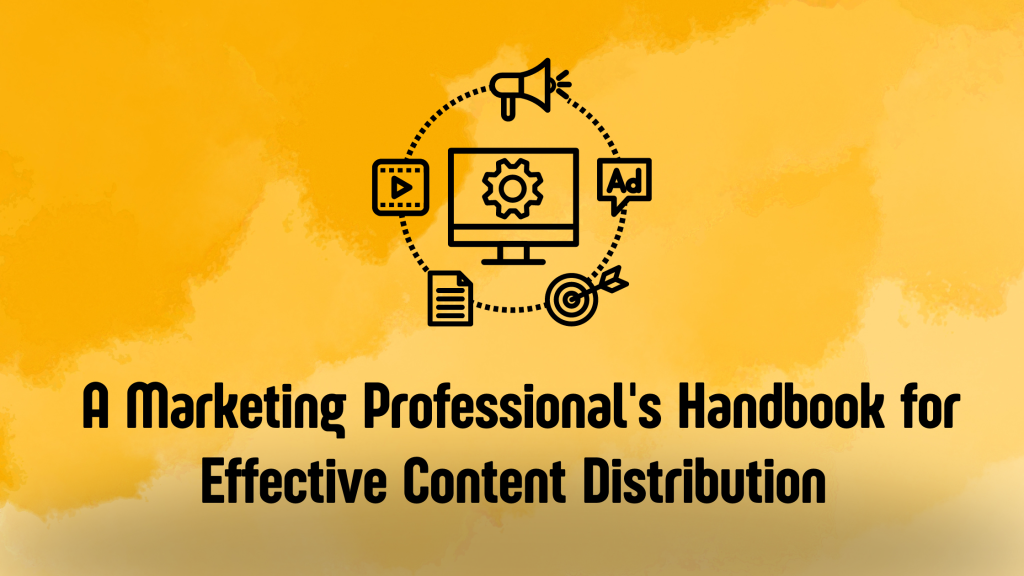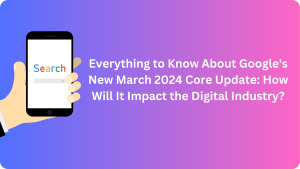Your customers, both the acquired and potential ones, aren’t all sitting at the end of the same content pipeline. While some might be consuming Facebook most of their time, others could be found on Google looking for information specific to your industry. So you need to be at multiple locations at once to capture them all.
It is the reason why effective content distribution is as important as creating high-quality and engaging content. Even saying that content distribution is more important has nothing wrong. So, that’s why we have come up with collective information about distributing the content the right way and how to create an effective content distribution strategy in today’s blog. So without further ado let’s gather the info to become a brilliant distributor.
What are content distribution channels and why are they important?
Hot and fresh tea is just poured into a cup by your mom. The cup is sitting on the kitchen top but there is no one to hand over the tea to you. Sad? Of course not because you can just go and grab the cup by yourself. However, that’s not what happens when you publish your content.
A great piece of content is only when it gets read or watched, right? But what if the piece is indeed great but didn’t reach the right audience?
Will you add it to the list of your great works? Absolutely NO as every content is generated with the core intention of being read or watched. Here comes the role of content distribution.
Content distribution refers to the practice of distributing content in many ways. And these ways are what we can call content distribution channels. As technology has evolved, you can’t expect your audience to be sitting at the end of a single content channel. If not me then you can believe these stats about distribution to understand the diversification of content in content marketing.
- In a single minute, a whopping 6.3 million searches are made on Google.
- More than 8000 tweets are made every second on X (formerly Twitter).
- Around 952 posts are posted on Instagram again in a single second.
- Lastly, content equivalent to 43 years is watched every minute by people all over the world.
So, that’s what content distribution channels stand for. There are many channels at the end of which your audience can be sitting and it’s your responsibility to serve them with the right content on the right platform.
Your audience is not going to move on their own to read your content. So, in this fast-paced world of content marketing, you need to be precise with your content and its distribution for a competitive edge.
Also, content distribution is not only about the publishing of your content but also about promoting it. Simply put, content distribution channels are the ways through which your potential audience receives your content.
For example, there are social media content distribution channels Like Facebook and Instagram. Similarly, there are many other channels like Google which can be targeted with blog and website content, YouTube or video content, and many more.
Types of Content Distribution Channels
Three types of content distribution channels can be used to share, publish, and promote your content. These three categories of distribution channels are owned, earned, and published. Let’s learn about all three of them in detail.
- Owner Channels
Firstly, there are the channels that you own. These channels are like your company’s assets that you manage for the sole purpose of content distribution. Now since you own these channels, you get a lot of customization options with these channels. Here are some of the channels that lie under owned content distribution channels:
- Website
Having a website is the start to owning the asset where you can publish your Content. A website is mostly created as a content channel where all the deals are locked. For example, if a company has a website to sell its products then it can get visitors through organic search, social media links, ads, etc. Hence it’s the end point for the user to get converted into your customer.
- Consumer apps
Similar to websites, the consumer app of a brand also works as a content distribution channel. These two channels also have another thing in common which is being the end point for sales. A consumer app can be at the end of the journey of a lead converting into a sale in many ways. For instance, a customer may go from website to app or from social media to website to app. These patterns also help to learn about the type of content that must be put in different channels.
- Blogs
Blogging is a significant part of content marketing nowadays. That’s why having a blog is quite common among companies. We also have our blogs where we share a lot of digital marketing knowledge with which we empower the online presence of our clients.
The best thing about blogs is their flexibility and a good amount of upper limit to share your thoughts, knowledge, etc along with compelling CTAs for product or service promotion.
- Social Media
A way to win the trust of your customers both existing and potential ones is to be present as near to them as possible. However, it’s physically impossible to do so. But with social media, a sense of being at the next door to your customer can be created. Social media accounts are the Content distribution entities that you own to let your customers connect with you easily through comments, stories, or even DMs. But more importantly, it’s a channel where you can put the Content mire GenZ way and keep yourself relevant to them as a brand.
- Newsletters
Newsletters let you ring the bell of your customers directly. However, your costume must be good enough that the door gets opened. Well, that’s something else that we can cover in a blog about email marketing. Back to the topic, this more personalized content channel gives a lot of opportunities to any brand from pushing their new blogs in the notifications to introducing new products or services.
- Earned Content Distribution Channels
A step up from owned, earned channels are the channels that you don’t have control of. It’s like cooking biryani, serving it to friends, and waiting for appreciation. You can’t just eat your biryani alone and say wow it’s delicious. However, this particular quality of these channels is what constitutes more trust and authority among the consumers.
An example of this can be looking for reviews while purchasing something like a smartphone. On an Amazon page, you will get all the information about the smartphone from its processor to the camera and any other components. Then why visit the reviews section? To get the real experiences of people with that product which is more authoritative as neither the brand owns that channel nor it can pay the reviewers for positive reviews.
Additionally, from the brand’s POV, these channels produce organic and unpaid leads and sales that’s absolutely what brands do all the work for. So let’s look at some earned channels that your brand can earn.
- Guest Blogs
Guest blogging is the practice of publishing blog content to other sites. This treaty of letting you upload the content to their sites makes sense because it’s a win-win situation for both you and your guest blogging partner.
- Media Coverage
Media coverage refers to the dissemination of information about your company. The channels here are media outlets like digital media or traditional media. Unlike paid advertising where you directly pay for space or time to promote your content, media coverage is “earned”. But how? Through the newsworthiness or relevance of the content to journalists and editors.
- User-Generated Content
User-generated content is when the users generate Content for you. Indeed, the Content doesn’t carry a very SEO-friendly style or a good-looking format but the authority that it brings is unimaginable. But there is more. The time when UGC used to stand for just reviews, comments, and ratings has gone. You can develop your UGC channels like what GoPro did. They have made a whole tool to let their users generate content for them with the adventurous bites of the users. So, the type of brand GpPro is, it’s the best-suited content for them.
- Paid Content Distribution Channels
As the name suggests, these channels are the paid ones that you must pay to get visitors, leads, and sales. There are many channels where you can pay to get user engagement and traffic. Let’s go through them one by one.
- Pay Per Click (PPC)
You may have encountered this acronym a lot of times in your content marketing research. The term PPC refers to paying for a space to advertise your brand. However, unlike traditional advertisements where you pay for the space and time, in PPC you only pay when you get a click. Hence, it comes under SEO marketing. So, while you can’t do much past advertising yourself, with PPC you can get more advantages by combining your SEO strategy with your SEM strategy.
- Social media advertising
Popular social media companies like Facebook, Instagram, LinkedIn, and many others offer paid advertisements on their platforms. This type of advertising is considered really advanced as targeting the right audience with customization is already on another level here. You can promote your content with ads and target the right audience based on their demographics like age, location, behavior, interests, etc.
- Influencer marketing
In an industry of $21.1 billion, influencer marketing is when you pay the influencers to promote your product or service to their audience. Reaching out to the influencer that has your relevant and potential audience can be very helpful to your lead generation and sales projection.
Moreover, according to a report, Instagram, YouTube, and Facebook are the top performers for influencer marketing in terms of ROI. Additionally, Instagram according to 32% marketers is easier to work with for influencer marketing.
Building an Effective Content Distribution Strategy
Now let’s jump to the main content which is the strategy to use for effective content distribution. There are some steps that one should know and follow to be able to create a strategy that can work effectively. So, let’s dive deep into this.
- Know your Audience
See content makes sense only when it is being consumed by those who really want to read it. For example, if there’s a blog you have written whose target audience is young people. Now, you have uploaded it to your blog. But what if you don’t get the engagement that you thought you’d get? Moreover, what if the content really is so good that it should get the expected engagement but still it’s getting nothing?
Seriously terrifying right? That’s why you must know where your content should go. If you want to get the attention of young GenZs, then their content-consuming platforms are different from Social Media platforms. So, why do blogs work for them? They will not.
Basically, you should research your audience and find the content types they are more likely to consume and the platforms where they are consuming the content. Google Analytics is a good tool here to get help. It allows you to look at your audience through various filters making it possible to differentiate them based on their gender, age, income, location, etc.
You should also study your existing content platform and its audience to know what pain points your audience is facing. Ultimately these two things will help you create buyer personas of your audience that will differentiate your audience into multiple groups and make it easy to identify them as a personality you created.
- Select the right channels
As you pass the first step, you can now go on the hunt for the content channels. While this hunt you should make sure that you know where you can expect your audience to be consuming the Content.
Firstly, go for the owned channels like social media, blogs, and websites. Now, a website is important for any business so you should include that. Moreover, a blog is important as well. However, choosing social media platforms can be tricky. You should make sure to invest your time in those social media channels where you think your audience really exists. As of now, Facebook topped the list of most popular social media platforms followed by Instagram and YouTube. However, for B2B businesses, LinkedIn did a better job. A tip for these owned channels is to be consistent with them when it comes to uploading Content.
Other than owned channels, paid channels should only be included if there is a need for them. Employ them very wisely so that you can actually get the best ROI from them. Moreover, earned channels also need a lot of work to do whether it’s guest blog media coverage or any other. You should make sure you have a prominent online presence before engaging with earned channels.
- Decide on your content types
When deciding on your content types, you have to be very industry specific. Look for great content types that are working for your industry. But first, let’s know content types are in general the most popular ones. According to Search Engine Journal, Videos, blogs, and images are the top three content types that were utilized the most in 2022.
Now, what do I mean by industry-specific? According to research, B2C marketers use blogs and videos more than other types of content. With 83% of inclusion in marketing strategies, blogs top the list of B2C marketing strategies and videos stay in second position with 61%. Long form content is also appreciated in B2C marketing with 42%.
On the other hand, the B2B business will find UGC and interactive content better for them. So do it wisely based on your sector?
- Choose the Key Performance Indicators
Now you should be aware of the performance of your content, right? To do this, choose the KPIs for all your selected channels. For blogs and websites, you can choose traffic, bounce rate, and average time on a page. Moreover, CTR, backlinks, and conversions also help to look at the performance of your website and blog.
The social media channels can be evaluated with the likes and comments you are receiving. In totality, You should ensure that your KPIs are specific to the channels and can be measured in numbers. Moreover, they should also be time-bound like this many “likes” in that much time.
- Create a Content Calendar
To make things easily manageable, you should have a Content calendar. It will help you to understand when, how, and where the content has to be uploaded. Moreover, it also ensures the consistency of making the content available to the audience.
- Create, distribute, and measure the success of your Content
As the last step, create your content while ensuring high-quality standards. Be specific with formats when creating content; an infographic should look clean, less informative, and more insightful. Similarly, a social media post can follow an entertaining format like memes.
Distribute your content on time with consistency. Don’t get late to launch the content according to the trends. Moreover, a pro tip is to keep some space on your content calendar, so that urgent content needs can be fulfilled without disturbing the work that has already been planned. This space can be utilized to act to instant trends of the market.
Also, don’t post the content and sit back. Keep an eye on your recently uploaded content and old content as well. Measure their impact and also make any changes if required like keyword changes or facts and insightful re-editing.
This is how you can create a great content distribution strategy for your brand. However, it may feel like a task doing all this. But worry not as now we are going to have a loot as some tools to help you with your content distribution.
9 Tools to Accelerate Your Content Distribution Strategy
- Buffer
If you want your content to reach the maximum audience, then social media platforms are the best place for it. However, managing several social media platforms can become hectic. So. to tackle this problem, you should use Buffer. It is a great social media management tool that helps you to streamline your content. With the help of Buffer, you schedule as well as publish your content across many platforms. Moreover, you can also plan your content distribution strategy beforehand. An added bonus is that you can track your engagement as well as optimize your posting schedule. By doing all this, Buffer will help you to get maximum impact through your content.
- BuzzSumo
You may already know that by including trends in your content you can reach out to more people. But, to know what topics are trending you need to do proper research. This is where BuzzSumo can be put to use. BuzzSumo is a powerful content research tool. Hence, it can help you to identify trending topics as well as find influential content creators. Moreover, BuzzSumo can also analyze your competitors’ content strategies. In this way, you can not only reach your maximum target audience but also stay ahead of your competitors. This content research tool also helps you to discover high-performing content in your niche. So, you can use this information to improve your content distribution strategy as well.
- Outbrain
One of the most important aspects of reaching your target audience is to get your content discovered or known. How can you do this? Well, content discovery tools like Outbrain can do this job perfectly for you. Outbrain can help you promote your content on some of the top publisher websites. Hence, you can easily reach millions of readers across the web. Besides, Outbrain also has its advertising network. So, it can help you to effectively drive targeted traffic to your website and increase your brand visibility.
- Mailchimp
One of the most effective channels for content distribution is email marketing. So, if you want to market your content through email, you have to oversee a lot of aspects. For example, you need to design your emails in a way that will appeal to your target audience. Sending your emails at the right time also becomes very important. However, it is not convenient to do all this on your own. Hence, email marketing platforms like Mailchimp are very beneficial for content creators like you. With the help of Mailchimp you can design, send as well as track your email campaigns with ease. Besides, Mailchimp comes with many automation features as well. Hence, it helps you to deliver personalized content to your subscribers at the right time. This in turn will successfully drive your engagement as well as conversions.
- CoSchedule
When it comes to content distribution strategies, one of the keys to success is scheduling everything. Hence, CoSchedule, a complete marketing calendar and project management tool can be very helpful to you. CoSchedule helps you to organize your content distribution workflow. So, by using this tool you can make your entire content calendar. Moreover, you can also collaborate with your team members. Also, CoSchedule lets you track the performance of your performance campaign through just one centralized platform.
- Sprout Social
You have already read in this blog about the importance of a social media management tool. Now, if you top it up with a social media analytical tool it can do wonders for your content distribution strategy. Hence, you should use Sprout Social which is a social media management and analytical tool. It will provide you with deep insights into your performance on different social media platforms. Moreover, you can also track your management metrics through this tool. In addition, Sprout Social lets you monitor brand mentions. The best feature of this tool is that you can use it to measure the impact of your content distribution in real time.
- Medium
If you write blogs, then Medium is one of the best platforms that you’ll come across. You can use Medium to publish your content and reach a wide audience. It is because Medium is a very popular platform and has thousands of readers that consume its content. You can publish almost any content here and still find your perfect target audience. It is the reason why publishing your blogs on Medium will help you gain a significant increase in people who see your content.
- PR Newswire
To reach your target audience, the news of news channels and journalists is also very effective. It is one of the oldest methods of content distribution. Hence, through PR Newswire, you can reach the perfect outlets for your content distribution. PR Newswire is a press release distribution network. This platform helps you to contact target journalists in your specific industry, area, or topic. Moreover, you can also get packages for different kinds of press like state, national, or local press.
- HARO
HARO is a reactive content distribution tool. HARO stands for Help A Reporter Out. This platform works by sending you daily emails. These emails mainly contain questions by journalists. So, if you respond to these problems sent by journalists, you get a chance to potentially feature in their articles. Hence, by becoming the source to a journalist you can help yourself by getting backlinks as well as press mentions.
Wrapping Up
To sum up, this is all about Content distribution and making an effective content distribution plan. Whether it’s the content channels or the content types, all these things should be chosen wisely based on insights to get the max out of their distribution.
However, you are most probably not going to become an expert on it on your first try. So, if you don’t have time and resources to do experimentation, you better get in touch with a marketing agency like The Digital Serve.
We at The Digital Serve are the pioneers in creating and distributing digital content. With our expertise in working with brands like Dalmia Shakti, ZEE5, and many more, we have pushed our clients to the top positions that they really deserve. So, without wasting any time, ping The Digital today and unlock the door of your online success.







